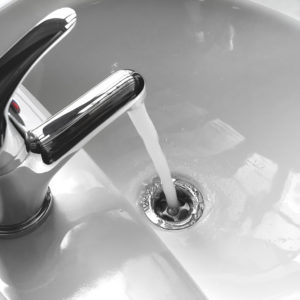Discussion of our nation’s crumbling infrastructure is nothing new. Wherever you live and wherever you’re going, odds are you’ve grumbled to yourself about a pothole more than a few times.
The good news is that, even against a backdrop of near-constant partisanship and stalemate, real action to improve our nation’s infrastructure does seem to be within reach. And while the bluster and political maneuvering continue, Congress recently passed a comprehensive infrastructure bill that will provide significant funding for real repairs and upgrades.
The Infrastructure Investment and Jobs Act recently signed into law, is a good first step toward getting much-needed investments in infrastructure.
The devil is always in the details, though, and the usefulness of these dollars depends upon their thoughtful application – and a healthy dose of local expertise throughout every stage of every project. Making the most of this opportunity means projects need to be proposed, planned, and executed not by bureaucrats, but by the local engineers and professionals who understand the distinct needs of our communities.
Our water infrastructure provides a textbook example of the type of project where design and execution driven by top-down mandate rather than local insight can lead to trouble.
Our nation’s drinking water infrastructure is already badly underfunded, and the federal cost-share for water and wastewater utilities is currently far below the support received by other critical infrastructure. Legislation may help to change that, but progress is threatened by the prospect of restrictions on the local selection of materials.
These efforts have typically been driven by special interests focused not on the best possible results for communities, but rather on promotion of their own industries. While these efforts have been rejected at both the state and local level, the effort continues to embed artificial preference for less-than-ideal pipe materials within the funding mechanisms for water infrastructure projects.
For instance, such preferences might specify that pipes utilize “innovative materials” or “open competition.” And while these turns of phrase might sound innocent enough, the reality is that they make it more difficult for communities in Oregon and around the country to act in their own best interests, taking control out of the hands of the people who actually know which materials will work and which will fall short.
The National Association of Counties, the U.S. Conference of Mayors, the National League of Cities, and other advocates have spoken out against such requirements in outreach to lawmakers, resolutions, and other platforms, and with good reason. For example, the National Association of Counties recently passed a resolution highlighting that local experts and communities are the ones best situated to “properly evaluate the suitability of materials based on many critical factors, including lifecycle costs, durability, reliability, experience, and the local conditions” of their water system.
As we think about the challenges that face our communities, the need for local control over the materials used in drinking water systems is very important so that communities can choose, among other attributes, pipes that won’t melt in the face of increasing wildfires. This isn’t a mere threat – it has already played out in wildfire-ravaged communities in the west. In California, the San Lorenzo Valley Water District lost roughly 5 to 7 miles of plastic pipe that melted to ash after the CZU Lightning Complex Fire swept through its operations area, leaving the water system to deal with benzene contamination in the water once the fire passed. In Oregon, the towns of Talent and Detroit saw damage to their water systems as a result of wildfires melting critical components in their city limits, forcing Detroit to go months without a fully functioning water system.
As we consider investments in water and wastewater infrastructure, it’s essential that compatibility with local requirements, not broad legislative mandates, are the deciding factor in material selection. Strings attached to funding should be tied not to things like the use of specific pipe material, but to tangible improvement to critical infrastructure. Local utilities and engineers can be trusted to choose the right material for their area.
Federal and state measures intended to fund infrastructure improvements will provide a massive boost to efforts to keep these systems robust. As the prospect of real progress draws closer, policymakers must resist the urge to govern by one-size-fits-all mandates and leave control in the hands of the local engineers and utility professionals best positioned to understand their communities’ needs.
After all, no one is more invested in the quality of our infrastructure than the people who call these communities home.

